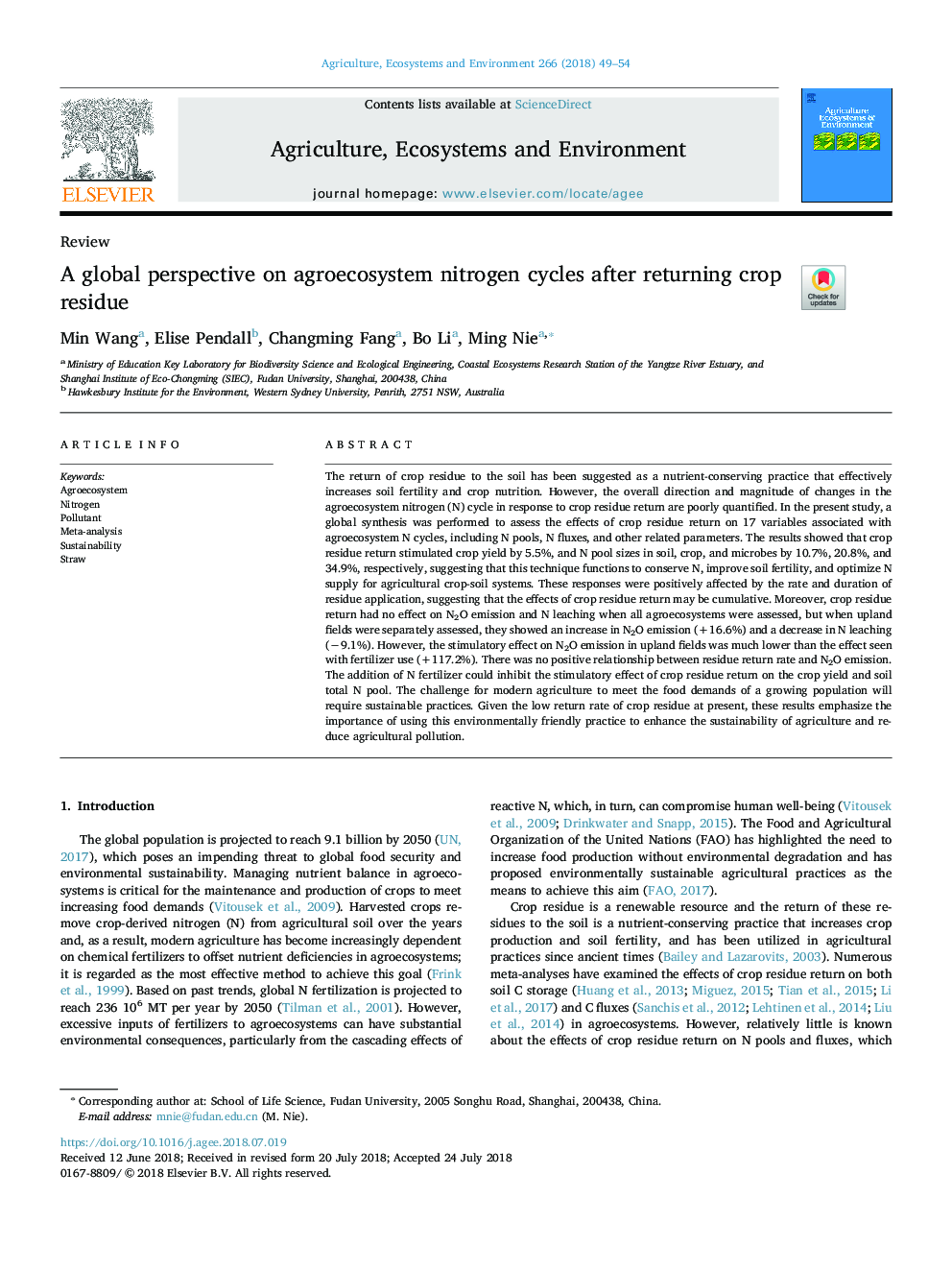| Article ID | Journal | Published Year | Pages | File Type |
|---|---|---|---|---|
| 8486941 | Agriculture, Ecosystems & Environment | 2018 | 6 Pages |
Abstract
The return of crop residue to the soil has been suggested as a nutrient-conserving practice that effectively increases soil fertility and crop nutrition. However, the overall direction and magnitude of changes in the agroecosystem nitrogen (N) cycle in response to crop residue return are poorly quantified. In the present study, a global synthesis was performed to assess the effects of crop residue return on 17 variables associated with agroecosystem N cycles, including N pools, N fluxes, and other related parameters. The results showed that crop residue return stimulated crop yield by 5.5%, and N pool sizes in soil, crop, and microbes by 10.7%, 20.8%, and 34.9%, respectively, suggesting that this technique functions to conserve N, improve soil fertility, and optimize N supply for agricultural crop-soil systems. These responses were positively affected by the rate and duration of residue application, suggesting that the effects of crop residue return may be cumulative. Moreover, crop residue return had no effect on N2O emission and N leaching when all agroecosystems were assessed, but when upland fields were separately assessed, they showed an increase in N2O emission (+16.6%) and a decrease in N leaching (â9.1%). However, the stimulatory effect on N2O emission in upland fields was much lower than the effect seen with fertilizer use (+117.2%). There was no positive relationship between residue return rate and N2O emission. The addition of N fertilizer could inhibit the stimulatory effect of crop residue return on the crop yield and soil total N pool. The challenge for modern agriculture to meet the food demands of a growing population will require sustainable practices. Given the low return rate of crop residue at present, these results emphasize the importance of using this environmentally friendly practice to enhance the sustainability of agriculture and reduce agricultural pollution.
Related Topics
Life Sciences
Agricultural and Biological Sciences
Agronomy and Crop Science
Authors
Min Wang, Elise Pendall, Changming Fang, Bo Li, Ming Nie,
